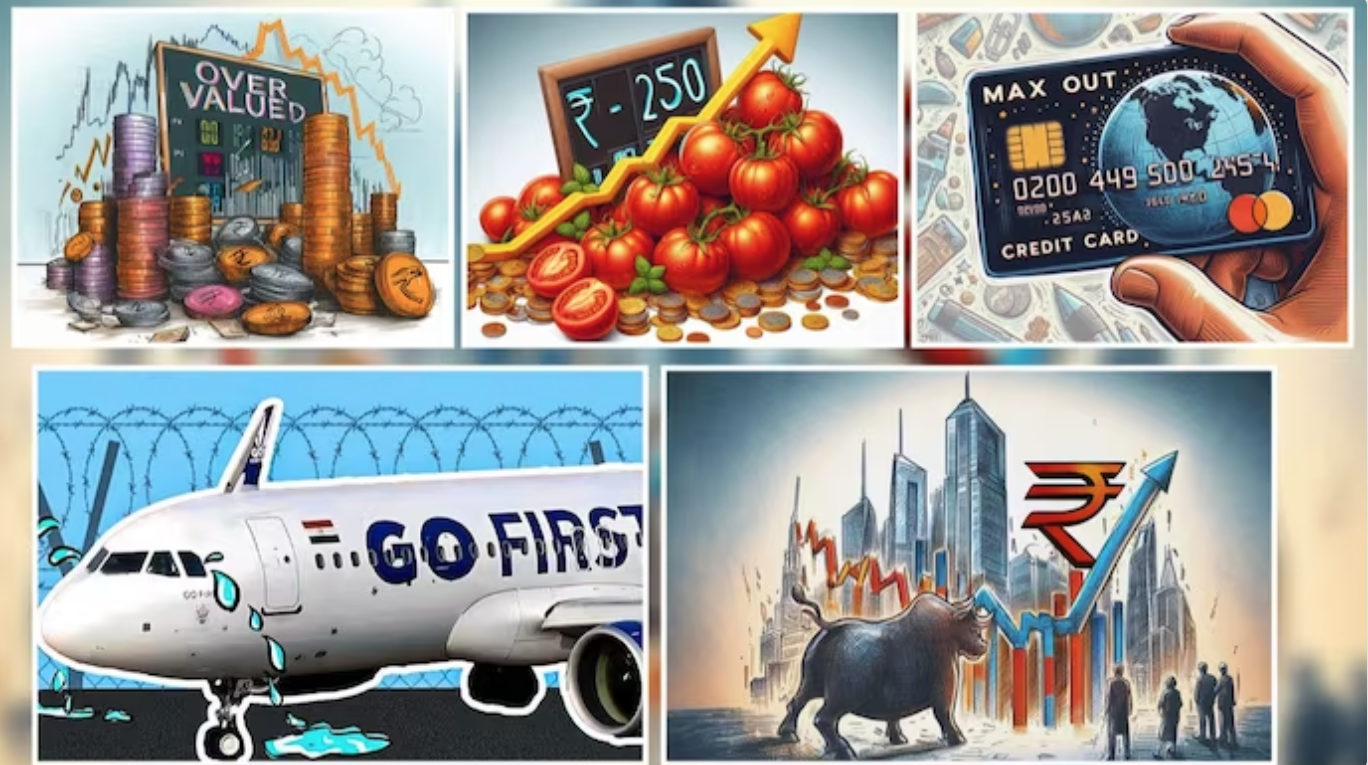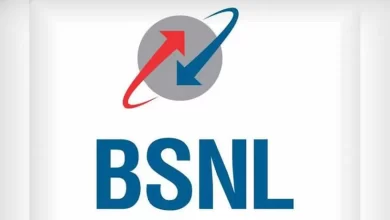IPO boom to Dalal Street’s dream run: Events that shaped India’s economy in 2023

As the sun sets on 2023, we reflect on a year that has been nothing short of extraordinary for India’s economic landscape, with a fair mix of triumphs and challenges.
Numerous events shaped the country’s economic landscape this year, and a few stood out—from Dalal Street’s record run to the return of the IPO boom, and India making its presence felt on the global stage by becoming the fifth-largest economy in the world.
This year saw an Indian bank join the global elite, but it was also the year citizens maxed out their credit cards. While tomatoes may not have been the reason behind the high credit card spending, the prices of this kitchen essential did reach an all-time high, causing distress across millions of households.
As digital payments adoption continued to grow rapidly, the Reserve Bank of India (RBI) decided to pull the plug on the elusive Rs 2,000 notes, announcing their withdrawal earlier this year.
And who can forget the dramatic saga involving one of India’s biggest conglomerates, the Adani Group and US short-seller Hindenburg Research, leading to a turbulent run in the Indian stock markets? Let’s delve into the key events that stood out in the world of business and economy in 2023.
Dalal Street’s record run
The Indian stock market witnessed a remarkable bull run in 2023, with the Nifty 50 index soaring to new heights, achieving year-to-date returns of +18 per cent.
Mid and small-cap stocks outperformed even more impressively, with gains of +40 per cent and +50 per cent, respectively.
The Sensex and Nifty hit multiple milestones, with the 30-share index crossing 70,000 mark and the 50-share index going past 21,000, buoyed by sectors such as defence, realty, autos, public sector enterprises, and pharma.
Jaspreet Singh Arora, CIO, Research & Ranking, said, “Looking at the sectoral performances this year, sectors like defence, realty, autos, PSEs, and pharma have been major outperformers while new-age businesses have been a dark horse.”
The rally was further bolstered by the launch of 58 mainboard IPOs, signaling strong investor confidence, Arora added.
5th-largest economy milestone
India achieved the status of the world’s fifth-largest economy in 2023, marking remarkable growth despite global economic concerns.
Several factors contributed to the country’s economic growth, including higher government spending on infrastructure, robust macroeconomic factors, increased foreign investments, strong corporate growth and calculated policy measures by the Reserve Bank of India (RBI).Jaspreet Singh Arora, said, “We are exiting 2023 on a positive note with RBI upping FY24 GDP guidance by 50bps to 7 per cent and US Fed suggesting at least three rate cuts in 2024.”
Arora highlighted that the Indian general elections in May and the US Presidential elections in November “could make the markets jittery in the runup to those events”. However, he added that a cool-off in oil prices combined with the strong earnings potential of the Indian companies paints a positive outlook for the market in 2024.
“Sectors like financials and IT and themes such as manufacturing, PSEs, and healthcare could be rewarding during 2024,” Arora said.
India’s IPO boom returns
2023 was a banner year for initial public offerings (IPOs) in India, with numerous companies making their debut on the stock exchange.
The year saw a diverse range of businesses tapping into the capital markets, from traditional industries to new-age tech-driven firms.
There were 58 mainboard IPOs in 2023, of which over 50 have delivered gains after listing and raised nearly Rs 49,500 crore. In addition, 172 SME IPOs also hit the markets this year, raising nearly Rs 4,500 crore.
Market analysts are optimistic about the future of India’s IPO market, predicting continued vibrancy in 2024 as the economy maintains its growth trajectory.
Investors have shown a keen interest in India’s growth story, and the successful listings have only added to the allure, promising more opportunities for both companies seeking capital and investors looking for lucrative ventures.
Withdrawal of Rs 2,000 currency notes
In a move aimed at curbing hoarding and black money, the RBI announced the gradual withdrawal of Rs 2,000 currency notes from circulation in May 2023. While the notes remain legal tender and can still be used for transactions, they are no longer being issued by banks.
The central bank has not issued any new Rs 2,000 notes in the past few years, leading to a natural reduction in circulation. This step is part of a broader strategy to encourage digital transactions and reduce the reliance on cash in the economy.
While the deadline to exchange these notes at banks has ended, individuals can still get them exchanged at 19 regional RBI offices across the country. In its latest update on December 1, RBI said 97.26 per cent of the Rs 2,000 banknotes in circulation as of May 19, 2023, have been returned or exchanged.
India welcomed Apple physical stores
The year marked a significant milestone for India’s manufacturing sector as Apple opened its first physical stores in the country, one in Delhi and another one in Mumbai.
Following the inauguration of the stores, Apple CEO Tim Cook expressed how the stores were “off to a great start” and exceeding their expectations. He called the new retail stores “one step” in their Indian journey, hinting at further expansion plans.
With Foxconn’s increased investment and focus on India, the nation is rapidly becoming a key hub for iPhone production, catering to both domestic and international markets.
This development underscores India’s growing prominence as a global manufacturing powerhouse, attracting major tech players seeking alternatives to China amidst shifting geopolitical landscapes.
Year of ‘sour’ tomatoes
Tomato prices soared to unprecedented levels in 2023, driven by supply shortages and erratic weather patterns. Prices skyrocketed to an unprecedented Rs 250 per kilo in 2023, following which elaborate steps had to be taken by the government to tackle inflation.
This price surge had a ripple effect on household budgets and the broader food market, highlighting the vulnerability of agricultural supply chains to environmental factors.
Not just tomatoes, but several other staple items such as rice and pulses witnessed a steep price in 2023, forcing India to take difficult steps that included export bans.
RBI Governor Shaktikanta Das recently highlighted the issue of unstable food prices, stressing on the need for better monitoring of inflation.
Credit card spending at record high
Indians embraced credit cards like never before in 2023, with spending reaching all-time highs. Credit card spending hit a record high of Rs 1.78 lakh crore in October, with the RBI expressing concern about the high growth in certain components of personal loans.
What sparked the concern was the fact that banks’ outstanding receipts from credit cards rose above Rs 2 lakh crore as of August 25.
During the RBI’s October policy review, Governor Shaktikanta Das said the central bank is closely monitoring certain components of personal loans that are witnessing “very high growth”.
He advised both banks and non-bank lenders to enhance their internal monitoring systems, address potential risks, and implement appropriate safeguards.
Going forward, the RBI has taken several measures to tighten unsecured lending by banks, hoping to reverse the alarming trend.
Adani vs Hindenburg saga
Although not directly linked to the Indian economy, the Adani-Hindenburg saga stands out as one of the most dramatic episodes of 2023 due to its substantial impact of the Indian stock markets.
It was January 24 that marked the beginning of a tumultuous chapter in Indian corporate history – the Adani-Hindenburg saga.
A scathing report by short-seller Hindenburg Research accusing the Adani Group of “brazen stock manipulation and accounting fraud over the course of decades” sent shockwaves through the Indian markets.
What unfolded in the months that followed was a roller coaster of allegations, market crashes, regulatory scrutiny, and public debates, making it one of the most defining economic events of the year.
At one point, the combined market capitalisation of Adani Group companies tumbled by over $150 billion, even as the Gautam Adani-led group rejected the allegations levelled by the US short seller.
The Adani Group has vehemently denied the accusations, calling the report “malicious,” “baseless,” and a “calculated attack on India.”
The drama took a new turn when the Indian regulators – the Securities and Exchange Board of India (SEBI) and the National Stock Exchange (NSE) – initiated investigations into the matter.
The Supreme Court also intervened, setting up an expert committee to probe the allegations. The saga didn’t remain confined to the financial realm. Opposition parties in India seized the opportunity to attack the ruling Bharatiya Janata Party (BJP), alleging its close ties to the Adani Group.
In the following months, Adani Group stocks showed signs of recovery, regaining some of the lost ground. However, the losses were significant, and the Group underwent a major restructuring exercise, diversifying its holdings and seeking partnerships.
As we approach the end of the year, the saga remains unresolved. While several investigations are ongoing, no conclusive findings have been announced. The Hindenburg accusations continue to hang over the Adani Group, and concerns about transparency and corporate governance persist.
Indian rupee’s rollercoaster ride
The Indian rupee experienced a tumultuous journey in 2023, hitting a lifetime low against the US dollar. The rupee hit a record low of 83.305 against the US dollar in October.
This unprecedented plunge sent ripples through the Indian economy, sparking concern and igniting discussions about the currency’s future.
Several factors converged to orchestrate the rupee’s depreciation. Globally, the US Federal Reserve’s aggressive monetary policy tightening to combat inflation led to a broad-based dollar strengthening, making other currencies, including the rupee, relatively cheaper.
Rising geopolitical tensions and a global economic slowdown further intensified the flight to safety, pushing investors towards the dollar.
Domestically, India’s ballooning trade deficit played a significant role. The surge in global commodity prices, particularly oil, led to a spike in India’s import bill, exceeding the value of exports.
This imbalance, coupled with foreign investors cautiously withdrawing funds from emerging markets, exerted additional pressure on the rupee.
Despite the record low, the rupee’s depreciation was more contained compared to other emerging market currencies. This can be attributed to several factors, including India’s relatively robust foreign exchange reserves, an increased inflow of foreign direct investments, and timely government interventions to curb non-essential imports.
Another airline bites the dust
Once a budget airline riding the wave of India’s aviation boom, Go First (formerly GoAir) took a nosedive in 2023, culminating in a May bankruptcy filing.
This dramatic fall, fuelled by financial turbulence and engine woes, sent shockwaves through the industry and left passengers scrambling for options.
Go First’s woes stemmed from a confluence of factors. The pandemic dealt a crippling blow, crushing passenger demand and draining resources.
Additionally, mounting debts and the grounding of half its fleet due to faulty Pratt & Whitney engines severely hampered operations. With revenue nosediving and losses piling up, bankruptcy became the only viable option.
The bankruptcy had immediate consequences. Thousands of employees faced job uncertainty, flights were grounded, and stranded passengers struggled with refunds and rebooking woes.
The airline’s future hangs in the balance, with creditors vying for control and a resolution process dragging on. The fate of Go First remains shrouded in uncertainty. Potential buyers have expressed interest, but negotiations are slow and complex.
HDFC Bank joins global elite list
The year also witnessed a historic rise for HDFC Bank, culminating with the private lender achieving the title of the world’s sixth-largest bank by market capitalisation.
The achievement, fuelled by the successful merger with its parent company – HDFC, solidified the bank’s position as a global financial powerhouse and showcased the Indian banking sector’s burgeoning potential.
The July 2023 merger was hailed as a landmark consolidation in the Indian financial landscape and combined the strengths of HDFC Bank, a retail banking leader, with HDFC’s mortgage expertise.
As of today, HDFC Bank boasts a market capitalisation of nearly Rs 13 lakh crore, higher than the likes of Morgan Stanley, Bank of China and HSBC.
This milestone isn’t just a victory for HDFC Bank; it signifies the rise of the Indian banking sector on the global stage. It attracts foreign investment, boosts confidence in the Indian financial system, and fuels aspirations for further progress.
As we bid adieu to 2023, these events stand as milestones in India’s economic journey as each played a role in shaping the country’s future trajectory. With a blend of challenges and triumphs, the year has laid a foundation for continued growth and prosperity in the years to come.







